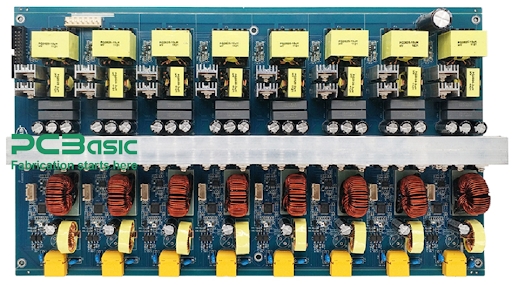
In today’s tech-driven world, electronic devices are at the heart of innovation. From smartphones to industrial equipment, these products all share a common foundation — electronic assembly. But how exactly does a bare printed circuit board (PCB) transform into a fully functional device? This process, known as PCBA to final product assembly, is a crucial journey in the electronics manufacturing world. Let’s break it down.
What is PCBA?
PCBA (Printed Circuit Board Assembly) refers to the process of mounting electronic components—like resistors, capacitors, ICs, and connectors—onto a bare PCB. This is done using either Surface Mount Technology (SMT) or Through-Hole Technology (THT), depending on the product’s design and application.
A completed PCBA is a functioning electronic circuit but still needs housing, wiring, and testing before it becomes a market-ready product.
1. Functional Testing
After assembly, PCBAs undergo functional testing to ensure all circuits operate correctly. This step often includes:
- Automated Optical Inspection (AOI)
- X-ray inspection (especially for BGA or hidden solder joints)
- Flying probe testing (for prototypes or low-volume production)
- Functional test setups based on end-use application
Testing ensures quality, reliability, and compliance before integration into the final product.
2. Cable and Connector Assembly
Many final products require power cables, data connectors, or antennas. These are installed during the cable and harness assembly stage, where technicians or automated tools attach the necessary wiring and ensure signal paths are properly connected.
3. Mechanical Assembly
This phase involves assembling the PCBA into the enclosure or housing. It could be:
- Plastic injection-molded casings
- Metal chassis for industrial or automotive products
- Customized cases for medical or consumer electronics
Thermal pads, screws, brackets, and insulation materials are also added during this step to ensure mechanical stability and safety.
4. Final Product Testing
After full assembly, the entire product undergoes end-of-line testing to simulate real-world usage. This may include:
- Signal transmission tests
- Environmental and durability tests
- Software loading and verification
These tests ensure the final product performs as intended under all expected conditions.
5. Packaging and Shipment
Once testing is complete, the product is cleaned, labeled, and packaged according to customer or regulatory requirements. Packaging may include manuals, accessories, anti-static bags, and protective foam to ensure safe delivery to the end user.
Why It Matters
Understanding the journey from PCBA to final product helps businesses:
- Optimize their supply chain
- Ensure product quality and regulatory compliance
- Select the right contract manufacturer
For electronics brands, this process is not just about assembly — it’s about delivering a complete, reliable, and competitive solution.
Conclusion
The electronic assembly process, from PCBA to final product, is a combination of precision engineering, quality control, and systems integration. Whether you’re launching a new consumer gadget or building industrial control systems, a deep understanding of this process ensures your product reaches the market fully functional and ready for success.
Category: Trending gossip
